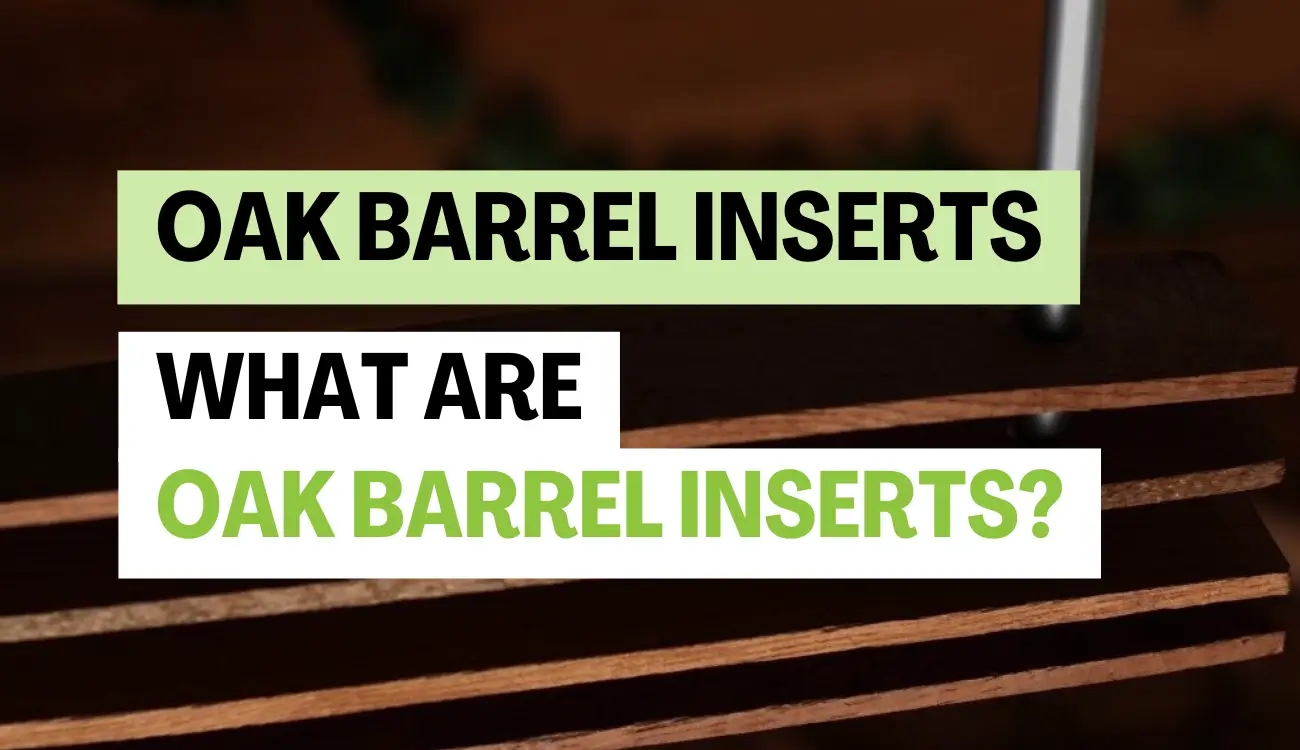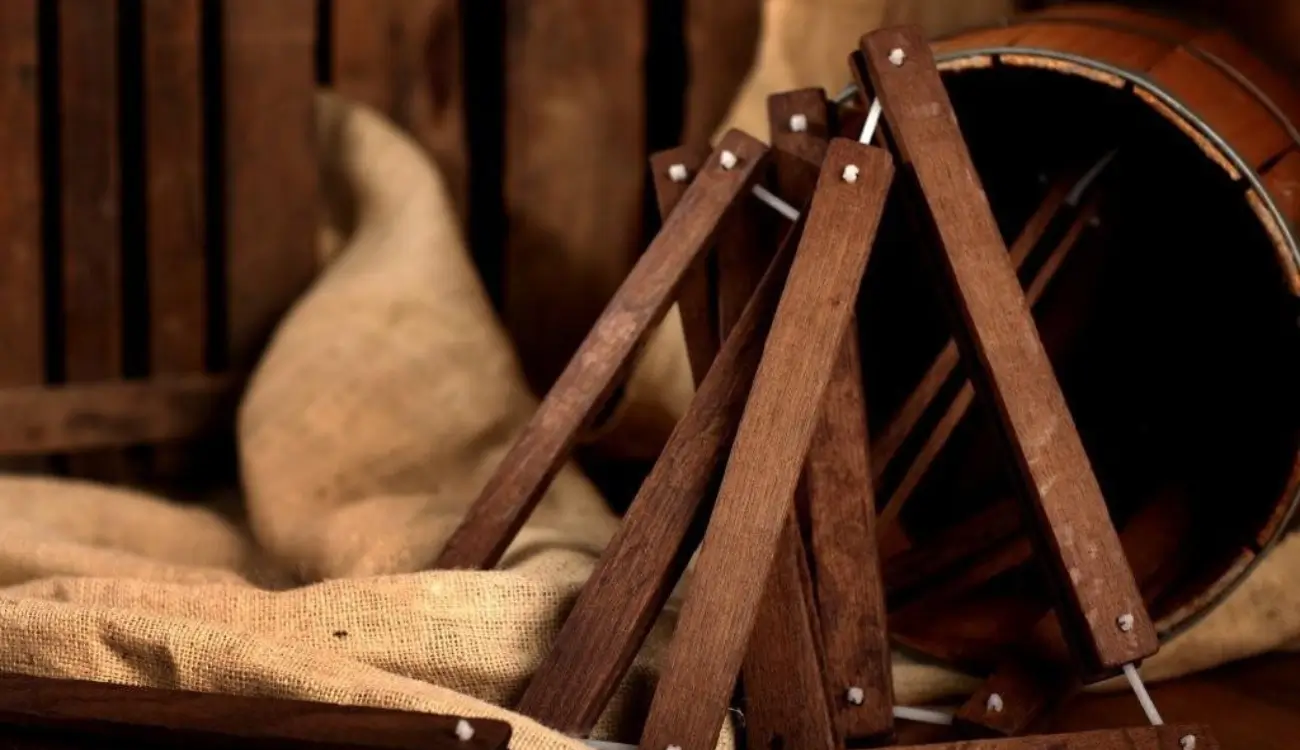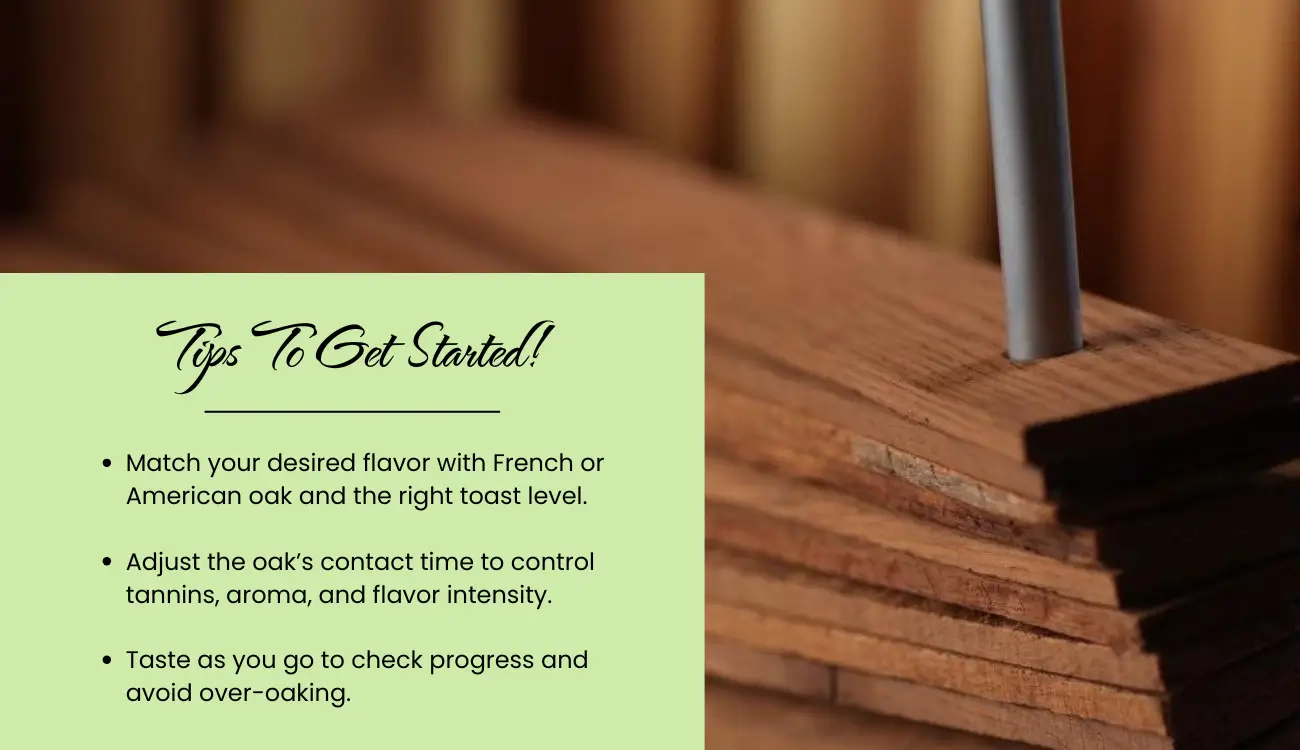Introduction
Oak plays a critical role in shaping the flavor, aroma, and texture of wine, but using full barrels isn’t always practical for every winemaker. This is where oak barrel inserts come in. These innovative oak alternatives allow winemakers to impart the complexity and richness of traditional barrel aging without the high cost, storage requirements, or long-term commitment of a full barrel.
In this blog, we’ll explore what barrel inserts are, how they differ from staves, the types available, and the advantages they offer to modern winemakers.
What Is An Insert?
A barrel insert is essentially a piece of oak—often shaped as staves, cubes, or spirals—designed to be placed inside a barrel, tank, or fermenter. Unlike a full barrel, the insert doesn’t hold liquid on its own; instead, it acts as an infusion tool, allowing wine to extract flavor, aroma, tannins, and color from oak during the aging process. Barrel inserts can be made from French, American, or other oak varieties, and they come in different toast levels, giving you control over everything from subtle vanilla notes to bold caramel or smoky characteristics.
Using an insert can mimic the effects of a traditional barrel but with greater flexibility, making it perfect for small batches, experimental vintages, or wines that require a shorter aging period.
The Difference Between Inserts & Staves
While barrel inserts and staves may seem similar at first glance, there’s a key difference: barrel staves are usually long, narrow pieces of oak that make up the sides of a traditional barrel, whereas inserts are standalone pieces intended to be added to an existing barrel, tank, or container.
Staves are part of a permanent structure—the barrel itself—so using them means committing to that barrel for months or years. Inserts, on the other hand, are removable and reusable, allowing you to adjust contact time, swap toast levels, or experiment with different oak profiles without committing to multiple barrels. This makes them ideal for winemakers who want to fine-tune flavor and structure on a per-batch basis. For a deeper dive into oak alternatives, you can visit our blog on Choosing the Right Oak for Your Wine.
How To Use Inserts For Your Wine
Using oak barrel inserts comes with several benefits that make them an appealing option for modern winemakers:
- Cost-Effective Aging: You get the flavor and tannin contributions of a barrel without the high upfront cost.
- Control & Flexibility: Adjust contact time, toast level, or oak type per batch to achieve your desired flavor profile.
- Space-Saving: Inserts require significantly less storage space than full barrels, making them perfect for small wineries or home winemakers.
- Consistency: Because inserts are removable, you can replicate results across batches more easily than relying on traditional barrel aging.
For winemakers interested in exploring oak alternatives further, check out our guide on using Oak Chips and Cubes to enhance flavor, aroma, and mouthfeel.
Barrel Inserts Are A Great Addition For Your Wine!
Barrel inserts are not just a convenient alternative—they are a valuable tool for winemakers who want flexibility, precision, and consistency in oak aging. By incorporating inserts into your winemaking process, you can experiment with different oak profiles, achieve your desired flavor and mouthfeel, and even optimize production costs.
Whether you are a home winemaker or part of a larger operation, using oak inserts is a modern approach that brings the best of traditional barrel aging into a more adaptable, manageable format. For more insights into oak usage and aging techniques, the American Wine Society offers a wealth of resources on oak influence in winemaking.




